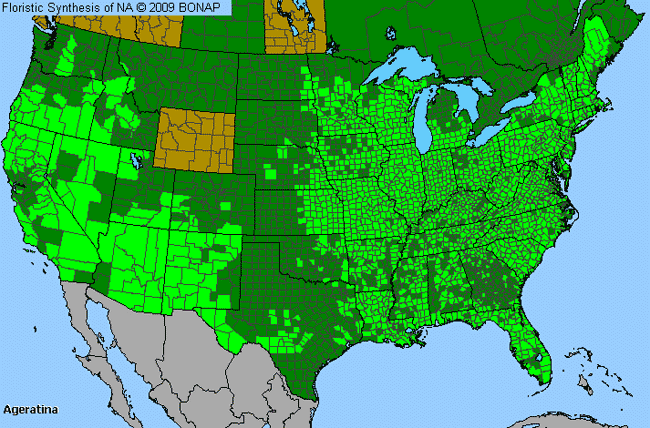Snakeroot (Ageratina)

Snakeroot Genus Details

This plant, which is in the Asteracae family, is also known by its former name Eupatorium. Snakeroot is native to eastern Canada but has spread throughout much of the U.S. It grows best in heavily-wooded areas, thickets and clearings. This plant is a perennial which can reach 60 feet in height. The leaves are toothed, ovate and may be slightly hairy on the underside. Its flowers are small, white and bloom in mid-summer through mid-fall. They grow in tight infloresences (floral clusters) of five to thirty flowers. Native Americans once used this plant to treat diarrhea and other intestinal problems.
Snakeroot Allergy Info

Little or no allergenicity has been reported, although cross reactivity to other members of this family may occur.
Snakeroot Pollen Description

Baccharis pollen grains are oblate-spheroidal to prolate-spheroidal; the amb triangular, 3-4 lobate and 3-4 colporate. The sexine is generally thick, tectate, and has long spines. The intine is thin but slightly thickened below the apertures. This pollen description applies to the pollen of Ageratina as well.
The grains are typically 20-30 micrometers in diameter.
Species in This Genus

Allergenicity Legend:
 Mild Allergen |
Mild Allergen |
 Moderate Allergen |
Moderate Allergen |
 Severe Allergen |
Severe Allergen |
 Allergy Test Available
Allergy Test Available
Snakeroot (Ageratina) is a genus of the ASTERACEAE family.
This genus includes the following allergenic species:
This genus includes the following allergenic species:











